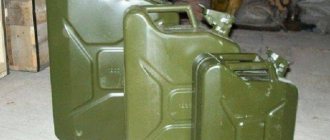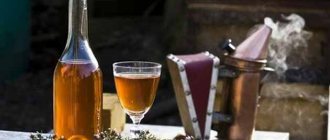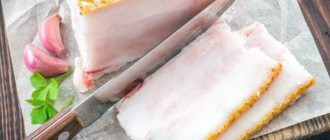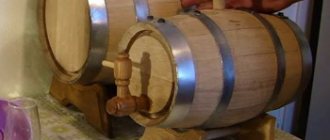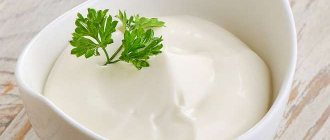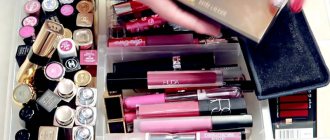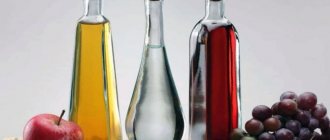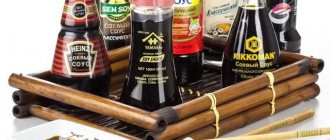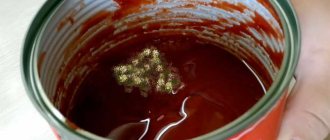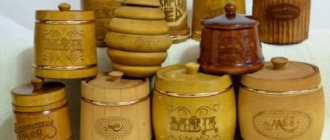How to properly store formula milk?
Proper storage of infant formula largely determines its quality and safety and, as a result, ensures normal digestion and good health for the baby.
When storing dry and diluted mixtures, strictly adhere to the manufacturer's recommendations.
Humana infant formulas are available in two forms:
- in cans – Humana Expert milk formula;
- in cardboard boxes with foil bags included - Humana milk formulas, special formulas for children with various digestive problems or prone to allergies (Humana HA, Humana HN, Humana AntiColic, Humana Bifidus, Humana AR, Humana SL).
Unopened dry mixes are recommended to be stored in a dry, cool place until the expiration date indicated on the package. Never use expired food!
Keep the opened package in a dry, dark, cool place at a temperature not exceeding +25ºС. Avoid exposure to direct sunlight. The best place for storage is a closed kitchen cabinet away from the stove. Do not store the mixture in the refrigerator as high humidity may cause clumps to form.
After opening the can or inner pouch, keep the product tightly closed and out of the reach of children. The contents of the opened package must be used within 3 weeks.
Even if you have formula left after this period, do not feed it to your baby. The mixture is packaged by the manufacturer in a vacuum environment. After opening a can or package, the substances included in the mixture interact with oxygen in the air, resulting in a change in their physical and chemical properties. For an adult, such changes may be unnoticeable, but the baby’s body reacts sharply to all changes in its familiar environment, which can lead to negative consequences on the part of the digestive system.
In addition to the mixture itself, it is important to properly store all the accessories necessary for its preparation - spoons, pacifiers, bottles. It is optimal to set aside a special container for them or store them in a sterilizer.
Remember that you can only measure and dilute the mixture with clean, dry hands. Otherwise, the risk of pathogenic organisms getting into the dry food increases, for which the nutrient-rich mixture is a favorable environment for reproduction and growth.
Shelf life
Once you open any baby food product, its shelf life is significantly reduced. Thus, adapted milk formulas or porridges should be stored unopened for no more than three weeks. If we are talking about fermented milk products, then they can be stored exclusively in the refrigerator, and they should be on a separate shelf.
Keep milk, kefir, cottage cheese and yogurt open for no more than a day, otherwise you can poison your baby. Before giving your baby fermented milk products from the refrigerator, be sure to try them yourself first. This will help you personally ensure that the food has not gone sour. If the milk turns sour before a full day, your refrigerator may be faulty or the temperature may be set incorrectly.
In cases where you prepare food for your child yourself, storing it is not recommended at all. Homemade porridge or already diluted mixtures will be suitable only for two hours from the moment of preparation, pureed vegetables or fruits will quickly darken, and juices will begin to oxidize. Anything your baby doesn’t eat on time should either be thrown away or eaten by yourself.
After opening
Most baby purees quickly lose their beneficial properties after opening. In addition, shelf life cannot always be found on jars. Intestinal infections are very dangerous for children, and therefore opened puree should not be stored for more than two days.
Much also depends on the refrigerator: one freezes more, another less. Never place baby food in the refrigerator door; it is better to place it on the top shelf.
Please note: if you pre-heated the jar, the shelf life of the product in it will be greatly reduced compared to the data on the label.
Also, the shelf life depends on the room temperature. If it is +20 degrees or more, then the product is suitable for only 5-6 hours.
Dry sweep
The safe storage time for adapted infant formula is clearly indicated on its packaging. Once the pack is opened, the shelf life will be reduced significantly. The fact is that dangerous microorganisms quickly develop in dry powder. Keep the open pack in the refrigerator, and prepare the product itself immediately before feeding. There is no need to dilute more than the baby will eat at one time. When traveling, put a bottle of formula in a thermos for baby bottles or a cooler bag. In this case, the baby food will remain fresh for some time.
Is it possible to store the finished mixture?
One of the main questions that parents of babies ask pediatricians is whether prepared milk formula can be stored and, if so, for how long?
The general recommendation of pediatricians is to prepare the formula for one feeding and feed the baby with freshly prepared formula immediately after mixing with water.
Do you always follow the correct storage of food/medicines and their product proximity?
Yes, of course, this is very important so as not to spend money on your health later.
43.91%
Not really, because there won’t be anything like going to the toilet.
24.72%
I look at it by appearance and if I use anything after heat treatment.
31.37%
Votes: 271
But such an opportunity is not always available. There are times when the mixture needs to be prepared in advance, since it will not be possible to prepare it for a long time (on a trip, etc.)
The European Society of Pediatric Gastroenterology, Hepatology and Nutrition (ESPGHAN) issued recommendations in 2004 according to which diluted dry formula can be stored in an airtight bottle at room temperature for no more than 4 hours. In the refrigerator at temperatures up to +4°C, the finished mixture can be stored for 30 hours. But this is only if the bottle is tightly closed with a sterilized cap, and the baby has not eaten from the bottle. If the child has even sucked a little from the bottle, it cannot be stored - it can become potentially dangerous for the child, since the risk of developing pathogenic microorganisms increases.
One of the options for safely feeding a child outside the home (on a long walk, on the road, in a clinic, etc.) is to take separate water and dry formula. Pour the amount of mixture needed for one feeding into a sterilized bottle and close tightly. Pour boiled water heated to +50°C into a thermos. When the baby gets hungry, pour the powder with water, shake it thoroughly and feed the baby with the freshly prepared mixture.
Classification of mixtures
Everything is very interesting with the classification of mixtures. First of all, before you buy the formula, you need to go to the pediatrician. It will help you determine which mixtures are suitable for you, what you can try to introduce into your diet, and what it is better not to even touch. Moreover, it is not the price that is important, but the composition of the mixture.
There are quite a lot of signs by which they are divided. Firstly, there are mixtures based on fermented milk products and mixtures without containing fermented milk products in principle. The second point is a sign of a mixture. It can be dry or liquid. The third point is the division of baby food into adapted and non-adapted products. Everything is simple here.
Any formula that is close in its components to the composition of mother's milk is adapted. As a rule, it contains a lot of useful vitamins, amino acids, substances and minerals. These include nucleotides, taurine, and all the necessary substances (iron, copper, calcium, etc.). Even in an adapted diet, the total amount of proteins is reduced. Moreover, there is also such a thing as the adaptation stage. Adaptation stages are divided by age:
- Mixtures of the first stage of adaptation can be given to children from birth. The starting mixture is distinguished by a large number “1” on the packaging. It can be given to infants up to four to six months. You can see this number on cans and packages of mixtures from any brand, for example, Nutrilon. Moreover, any packaging containing baby food must be marked with a number. The number shows you at what age a particular baby food is suitable.
- Partially adapted baby food is suitable for babies from two to three months. This mixture can be easily identified by the inscription “0-12” on the package. They contain predominantly whey or casein protein.
- Formulas of the second stage of adaptation are suitable for children from six months to one year. On the packaging it is indicated by a large number “2”. The second marking option is numbers from six to twelve. The amount of vitamins in such mixtures is much higher.
- Third-stage formulas are needed for children one year and older. On the packaging, logically, there is the number three.
The unadapted formula uses unprocessed animal milk. Usually - cow's. But since cow's milk does not contain even half of the necessary nutrients, but contains large quantities of lactose and protein, such mixtures must be diluted before use. That is, an unadapted formula made with cow's milk needs to be diluted two to three times. Moreover, it is possible to feed children with unadapted formulas only after a year of life. Otherwise, the child’s body may react with a bouquet of various gastrointestinal ailments. And this does not add joy to parents at all.
The third category of mixtures is special and dietary mixtures. They are needed for underweight babies, infants with lactose allergies, and babies born a month premature. And, of course, these mixtures are prescribed only by a doctor, and only after examining the child. Diet food is also divided into several subtypes:
AGREEMENT
to process personal data and receive advertising (hereinafter referred to as “Consent”)
1. I (the User) hereby, in compliance with the requirements of the legislation on personal data, as well as the legislation on advertising, freely, of my own free will and in my own interest, give my consent to: Humana LLC (hereinafter referred to as the “Company”) to the processing of my personal data, specified when registering and/or leaving an application to receive a leasing calculation and/or to receive advertising information related to the leasing agreement and leasing activities (including advertising) via any communication channels, including: SMS notification, mail, telegram, voice message ( hereinafter referred to as the “Newsletter”) by filling out a web form on the website https://www.humana-baby.ru/ (hereinafter referred to as the “Site”). Personal data means any information relating to me as a subject of personal data, including: last name, first name, patronymic; work and mobile phone numbers, email addresses, as well as other personal data, including those obtained by filling out a leasing calculation application on the Site. The purposes of processing, including the purposes of collecting personal data, are: determining the possibility of concluding leasing agreements, agreements for the provision of consulting services, purchase and sale agreements, any other agreements necessary for the implementation of the leasing agreement, their conclusion, modification, execution and termination, promotion leasing and other services through any means of communication, as well as to ensure compliance with laws and other regulations.
2. I agree that, as part of the processing of personal data, the Company has the right to collect, record, systematize, accumulate, analyze, use, extract, distribute, transfer to any other third parties, including cross-border transfer, receipt, processing, storage, clarification (updating, changing), depersonalization, blocking, deletion, destruction of my personal data by maintaining databases using automated, mechanical, manual methods for the purposes of: maintaining and updating the client base; obtaining and researching statistical data on sales volumes and quality of services provided; conducting marketing programs; conducting surveys and research aimed at identifying User satisfaction/dissatisfaction, constantly improving the level of services provided; informing me about the services offered by the Company, ongoing bonus events, promotions, etc.; advertising and any other promotion of goods and services on the market through direct contact with me and other consumers; technical support when processing information and personal data using automation tools and without such use.
3. I agree to receive advertising and authorize the Company to send SMS mailings to me, as well as other types of Mailings and notifications, including advertising ones, using any means of communication, including email.
4. I am aware that: this consent to the processing of my personal data and receipt of advertising is valid for 20 (twenty) years, and in terms of personal data contained in documents and other media, the storage period of which according to current legislation exceeds twenty years, the consent to the processing of personal data is valid during the storage periods of such documents and other information media established by current legislation. Consent to the processing of personal data may be withdrawn by sending a corresponding written notice to Humana LLC at the location addresses specified in this consent. In this case, the person who has received the revocation of consent to the processing of personal data or consent to receive advertising stops processing personal data, and the personal data is subject to destruction or depersonalization, unless there are other legal grounds for processing established by the legislation of the Russian Federation or documents of the person who has received the revocation of consent to processing of personal data regulating issues.
Humana infant formulas are available in two forms:
About the process of preparing the mixture
For inexperienced mothers, preparing formula for feeding babies is a rather complicated process. Therefore, they should understand in advance how it is prepared.
The procedure for preparing liquid begins with preparing water. First, you need to thoroughly boil it on a gas stove. In this case, water should not be kept on fire for more than half an hour. When the liquid boils, remove it from the stove and leave to cool to 35-40 degrees. The cooled liquid is poured into a baby bottle, after which an adapted nutritional admixture is poured into it. Then the container is tightly closed with a lid so that air does not penetrate into it.
To thoroughly mix the mixture in the water, carefully screw the lid on the baby bottle and shake it several times.
If, after shaking, the powder does not dissolve in the water and collects in lumps at the bottom, you will have to shake the bottle 2-3 more times. Properly prepared nutrient liquid should have a uniform consistency.
Before using prepared food, check its temperature. It should be about 35 degrees. To check, it is recommended to apply 1-2 drops of liquid to the wrist, elbow or other sensitive area. A person should not feel a burning sensation after the liquid gets on the skin.
Preparing the mixture
It seems like everything is very simple. At least until you come across the process closely. What should you do, you think, pour the mixture with water, shake it, drop it on your hand, give it to the child to drink. What else is needed?!
But alas, everything is a little more complicated. Like all things, seemingly simple things. First of all, you need to decide on the type of mixture. There are dry mixtures that just need to be diluted with water (preferably with special water for children). There are also liquid mixtures that need to be heated. There is also food that does not require special preparation, and mixtures that require boiling (for example, Malyutka).
Before you start preparing food, look at the packaging and read the instructions. Fifty percent of the cooking work has already been done. =)
Boiled water should be no more than fifty to sixty degrees. If you add the mixture to hotter water, all the beneficial substances will simply escape from the mixture. You will have to start all over again. You then cap the nutrition bottle and shake it to mix the mixture.
An important nuance: the mixture should be homogeneous, without the presence of lumps. To find out the temperature, you need to place a couple of drops on your elbow or wrist. If you practically don’t feel it, everything is ok, you can feed the baby.
If you cook the mixture, then you need to cool it to thirty-seven degrees. Cook for no more than three to five minutes. You can see the exact time on the packaging.
Each portion of the mixture must be prepared immediately before feeding. After your baby has eaten, pour out the rest of the formula and wash the bottle. The remainder of the mixture should never be stored. The thing is that when the baby drinks ready-made food, baby saliva gets into it. And if you leave the rest of the mixture for the next feeding, it will inevitably spoil.
Storage rules
Every young mother should know the shelf life of prepared baby food for feeding her baby, since spoiled food can harm the baby’s health. Having understood the nuances of storing nutrient liquid in the room, you will be able to preserve it longer than usual.
How to store diluted baby formula
First, you need to figure out how to store baby powder after diluting it in water. Some mothers prefer to leave the food directly in the bottle and not pour it anywhere.
However, when using such a container for storage, you will have to sterilize it in advance so that the mixture does not spoil quickly at room temperatures.
Also, to preserve ready-made baby food, use a regular thermos for warm drinks. In such a container it is much easier to keep the pulp warm.
How long does the prepared mixture last?
To understand the shelf life of baby food, you need to familiarize yourself with the shelf life of formulas from the most well-known manufacturers.
Popular baby food manufacturers include the following:
- "Nutrilon". This unprepared baby food can be stored for no more than 3 or 4 weeks. The finished liquid has a much shorter shelf life. On the packaging you can find information according to which the powder diluted with water should be used within the next hour.
- "Nan." Compared to Nutrilon, this food lasts a little longer. The manufacturer advises storing unopened packaging for no longer than a month. Prepared food can be stored at a temperature of 15-20 degrees for two hours.
- "Similac". An open package of baby food can be stored for two and a half weeks at room temperature and air humidity of about 70%. After cooking, the pulp lasts only an hour and a half.
- "Nanny". The packaging of this manufacturer's products states that it should be used within a month. Cooked food will keep in the refrigerator for two hours.
- "Unstable." Like most other additives, Nestozhen products are stored in packaging for 25-30 days. Cooked food begins to spoil within three hours.
Why can't you refreeze?
Thawed product should not be frozen, this is a correct statement. Refreezing a thawed product may affect the quality and taste (and possibly the nutritional value) of the product, and pathogenic bacteria may begin to multiply when defrosted. It is always necessary to cook thawed food before refreezing. Cooking the food once thawed allows it to be re-frozen in one single cycle. Storing a bag of frozen fruits or vegetables makes meal prep a quick and easy solution. There is no need to defrost the whole bag, just take out the required amount of product and leave the rest in the freezer.
The easiest way to freeze baby puree is to spoon it into an ice tray and cover the top with plastic wrap so that no air gets in.
Before using ice molds, they must be thoroughly cleaned with soap and rinsed with boiling water. Some parents even submerge their ice cube trays in boiling water to sanitize them (note: Make sure this treatment is suitable for the molds before use.)
Why can’t the mixture be stored for a long time?
Some young mothers prefer to prepare the mixture in advance in order to store it in this prepared form for longer. However, this should not be done, since warm liquids increase the number of harmful bacteria that lead to colic and bloating in babies. Baby food contains a lot of fat and protein, and is therefore considered an ideal breeding ground for dangerous bacteria. The proliferation of harmful microorganisms begins if the prepared and usable liquid is stored for more than one hour at a temperature above 20 degrees. They also multiply when regularly heated on a gas stove or in the microwave.
Tips
- Before buying a particular product, you should study all the information from the manufacturer contained on its packaging. Pay attention to the production time - in case the jar stood in the warehouse for a long time.
- Once opened, baby food spoils quite quickly and should not be kept in the refrigerator for more than two days. If necessary, heat a single serving portion rather than a whole jar, otherwise its shelf life will be reduced to one day.
- The maximum recommended storage temperature for sealed jars of baby puree is 12 degrees, and for opened jars it is only 4 degrees (standard temperature inside the refrigerator). The shelf life of opened products without a refrigerator is reduced to 6 hours at temperatures below 20 degrees and, accordingly, 4 hours at higher air temperatures.
- If you have the slightest doubt about the quality, immediately throw the yogurt or finished puree into the trash. There is no shortage of baby food in stores; you can always buy more, and the baby’s health is much more valuable than a few discarded jars.
- It is unlikely that you will be able to find out for sure how the food was stored in the warehouse. But always pay attention to compliance with storage conditions at points of sale. You can rest assured when you see refrigerated shelves and products with normal expiration dates. At the same time, jars laid out on regular shelves at a temperature of about 30 degrees should alert you.
Sometimes it is not easy to recognize a spoiled product, since it can retain the same appearance and smell throughout almost the entire shelf life. Take care of your child’s health, because no one will take care of this better than your own mother.
How to store baby formula
Storing baby formula is an important aspect on which the baby’s health directly depends. Feeding formulas are indispensable assistants for mothers who, for some reason, cannot breastfeed their babies. On the other hand, infant formula always poses a potential threat to a small organism, since there is a possibility of bacteria entering it. Therefore, it is very important to know how to properly store formula. Moreover, it is important to know not only how long it can be stored in diluted form, but also in what container it is best to keep it. Equally important is how long an open can of baby formula can be stored. We will try to cover all these aspects in detail in our article.
The most important thing in storing baby formula
An open can of baby formula should not be stored for more than 21 days, that is, longer than three weeks.
You can store diluted baby formula at room temperature for no more than 3 hours.
Diluted baby formula can be stored in the refrigerator for no more than 1 day.
How to store dry baby formula
The manufacturer always indicates the shelf life of baby formula on the packaging. However, after opening it, these data can no longer be used as a guide. Usually the dry mixture is sold in tin, opaque jars with tight-fitting rubber lids. Less often, but you can also find this product in a glass jar. But manufacturers who want to reduce the cost of their products are limited to cardboard packaging, at best, with a foil bag inside.
And, if in a glass or tin container the dry mixture may well remain usable for the entire permissible shelf life, then it cannot be left in a paper package for even a minute. Many mothers simply pinch the edge of the opened pack with a clothespin. In fact, you can’t do this; not only bacteria, but also pest larvae can easily get into the mixture. It is best to immediately after opening the cardboard package pour the powder into an opaque, dry, sterile glass or tin jar with a tight-fitting lid. This is the best option for storing opened baby formula.
At a temperature of 14-24°C in a dry and dark place in a glass jar it will be stored for 3 weeks. If there is a need to pour the mixture into another suitable container, then it must first be thoroughly washed and sterilized (including the lid).
Often mothers are indignant about why 3 weeks is the maximum shelf life for open formula. In fact, this is not without meaning, and if the manufacturer indicated exactly such a period, this means that after its expiration the product will be spoiled. The thing is that vitamins, when exposed to air, tend to disintegrate, which means that the longer an open mixture is stored, the lower its vitamin value.
For many mothers who rarely use infant formula as complementary foods, this is extremely wasteful. Unfortunately, infant formula is not currently sold in portioned bags or in very small quantities. Therefore, mothers have no choice but to use, after three weeks, the remaining dry mixture for other purposes (for example, in baking).
Frozen vegetables or fruits are safe in baby food
You can freeze fruits and vegetables. Using frozen fruits and vegetables is the second best option to eating fresh produce. The process of flash freezing (food is frozen at a very low temperature very quickly) actually preserves nutrients optimally. Cooking destroys more important nutrients and nutrients than freezing food. Contrary to myth, freezing food (particularly fruits and vegetables) does not destroy 100% of the minerals and vitamins. The freezing process, subject to storage conditions at a constant temperature of zero degrees, does not contribute to the complete loss of nutrients and important substances - if this is so, then the majority of the population is malnourished, since in winter we eat a huge amount of frozen foods.
Frozen vegetables that are not cooked when packaged should be cooked before eating. Please remember to read the labels on frozen bags, as some brands of frozen vegetables may be pre-cooked.
One of the most frequently asked questions is: “Can I use frozen fruits or vegetables to make baby food and then freeze the puree?” Since there are no studies that show that re-freezing is negative and/or can have a negative impact on health. The problem is that you need to cook food from products that have been frozen once. But the reality is that a frozen product, going through all stages from a fresh appearance to a frozen product in the refrigerator in a store, can survive several defrosts and freezes, as it was written earlier that nutrients are lost through water crystals. Therefore, store-bought frozen vegetables and fruits must be carefully selected, and we would not recommend preparing baby food from them for subsequent freezing of baby purees. It is clear that sometimes parents have no choice and have to start complementary feeding with store-bought frozen food products, so we carefully select the packaging and manufacturer, without holes, without pieces of ice.
For example, from frozen vegetables (homemade or a good quality store-bought bag) that were raw when frozen, prepare a roast; we freeze the rest of the roast and use it for its intended purpose next time, but you should not freeze the roast after the last defrosting.
How to store diluted baby formula
Despite the fact that it is permissible to store diluted baby formula, it is advisable to take with you water at the required temperature and dry formula separately. It is easy to prepare and in this version will definitely be as safe as possible for the baby’s health.
Every mother should know how long to store diluted baby formula so as not to endanger her baby. In a warm environment, bacteria begin to actively multiply, and just a few hours after preparation, it becomes unsuitable for consumption. For the same reason, you cannot store baby formula if the baby has not finished it or even just touched the nipple with his lips. Bacteria have already entered the prepared mixture, so later this mixture cannot be fed. You cannot feed your baby the same formula from a bottle several times; it must be poured out.
Constipation from Nan Optipro: normal or not?
In a good way, if the baby eats well, there should be no reactions, but sometimes mothers still complain about constipation in the child from the “Nan” formula.
It's possible. There are several reasons for this:
- The body needs time to get used to it . If you switch from one mixture to another too quickly, then the baby’s body may not have time to adapt.
- The mixture is too thick . When preparing, you must strictly follow the instructions on the package - diluting the food too thin leads to diarrhea, and diluting it too thick leads to constipation and can further lead to dehydration.
- The baby drinks little . Formula-fed babies need to drink more than infants.
Recommendations for storing powdered infant formula
- Store the mixture according to the expiration date label on the package. Expired food should not be used.
- Do not pour the mixture into another jar or container. The packaging has certain properties suitable for storing the mixture.
- Keep the dry mixture in a cool, dark place. Do not expose it to direct sunlight or moisture; a refrigerator or cabinet near the stove is completely unsuitable for this purpose.
- In addition to the mixture itself, proper storage of all accessories necessary for its preparation (bottles, pacifiers, spoons, towels) is important. Take a special container for them or store them in a sterilizer.
- Remember that you can only dilute the mixture with clean, dry hands. Otherwise, pathogenic microorganisms may enter dry food, for which it serves as a favorable environment for development and reproduction.
These simple rules will help preserve the beneficial properties of the mixture and prepare food that is tasty and safe for your baby’s health.
Storage conditions NAN ® 1 ready-to-use
Keep out of the reach of children.
Do you use expired food for cooking at home?
Yes, the main thing is to process it if it is meat or expired kefir for pancakes.
27.72%
No, it is very dangerous and not useful.
36.37%
If the products have fungus or mold, then we throw them away; if they are a couple of days past their expiration date, we use them for food, even without heat or other treatment.
35.91%
Voted: 1952
Storing ready-made infant formula
You need to be even more careful when storing the already diluted mixture. Of course, any pediatrician will give the right advice: “Do not store ready-made food, dilute the mixture immediately before feeding.” In a warm nutritious drink, bacteria can quickly multiply, which is dangerous for the child’s intestines. However, situations are different, so in exceptional cases it is allowed to store prepared food for no more than 1–1.5 hours at room temperature (not higher than 25 degrees Celsius).
- The diluted mixture can be stored in the refrigerator for no more than a day, but only if the bottle is hermetically sealed with a sterile cap. This is only permissible if the baby has not yet eaten from a bottle.
- If the child has eaten a little, but the formula is still left, you should not store it - it becomes potentially dangerous for the baby.
Many mothers have a natural question: what to do on the road, in the clinic, or on a long walk? What to do if you know that your baby wants to eat out? In such a situation, take a sterile bottle, pour the amount of mixture required for one feeding into it, and pour warm water into the thermos. When the baby is hungry, add water to the powder, stir well and feed the baby!
You need to be even more careful when storing the already diluted mixture. Of course, any pediatrician will give the right advice: “Do not store ready-made food, dilute the mixture immediately before feeding.” In a warm nutritious drink, bacteria can quickly multiply, which is dangerous for the child’s intestines. However, situations are different, so in exceptional cases it is allowed to store prepared food for no more than 1–1.5 hours at room temperature (not higher than 25 degrees Celsius).
How to store baby food
One of the issues that causes difficulties for mothers is the storage of baby food. If the dates for not starting meals are indicated on the packaging, then what to do with an open pack of porridge? Where and for how long should you store a jar of started puree or a package of baby cottage cheese? We'll tell you about it.
One of the issues that causes difficulties for mothers is the storage of baby food. If the dates for not starting meals are indicated on the packaging, then what to do with an open pack of porridge? Where and for how long should you store a jar of started puree or a package of baby cottage cheese? We'll tell you about it.
https://grudnichky.ru/pitanie/skolko-mozhno-hranit-razvedennuyu-smes.htmlhttps://kak-hranit.ru/kak-hranit-detskuyu-smes/https://nutrilak.com/article/skolko- hranitsya-detskaya-smes/https://www.nestlebaby.ru/articles/kak-hranit-detskoe-pitanie
Adaptations
Avent containers
A set of sterilized VIA Avent Gourmet containers from Philips is a convenient and meticulously thought out system for storing baby food, including mother’s milk. These containers can be used repeatedly; there are several of them in the set, but they should be thrown away immediately if the look becomes unusable.
System advantages:
- this is a convenient new product for storing, transporting mother’s milk/formula and feeding the baby;
- containers are easy to clean;
- thanks to the sterility of VIA Avent “Gourmet”, there is no need to rearrange the contents during feeding;
- you can use a convenient spoon, which is also included in the set;
- the containers are quite stable and do not take up much space during storage; if desired, they can be stacked on top of each other;
- The milk collection time can be easily written directly on the surface of the VIA Avent container.
Other sets
In addition to the undisputed market leader - the manufacturer VIA Avent, you can find containers designed for storing baby food from other brands:
- Babymoove (France). The main advantage is the presence of not only plastic containers, but also sets made of food-grade silicone.
- BabyOno (Poland) - a line of plastic containers that do not contain bisphenol-A, which is harmful to children; a special spoon-shaped dispenser is built into the container lid. Also on sale you can find a set of magic silicone molds, the distinctive feature of which is a hermetically sealed lid with four locks, preventing leakage.
- Beaba (France) boasts not only multi-portion silicone containers, but also special containers for cooking cereals. This is good news for parents who are starting to introduce homemade cereals to their baby.
- Brother Max (UK) produces sets of cube-shaped baby food freezer containers that can be easily snapped together.
- Infantino (USA) – their products are distinguished by a professional approach to business. Now moms and dads have the opportunity to get a real station for packaging baby food.
All modern baby food storage kits are dishwasher, freezer and microwave safe.
